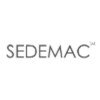Process Quality Engineer
30+ Process Quality Engineer Interview Questions and Answers

Asked in vivo

Q. What is process quality control and how to manage line quality
Process quality control is the systematic approach to ensure that a product or service meets the desired quality standards.
Identify critical control points in the process
Establish quality standards and specifications
Monitor and measure process performance
Take corrective actions when necessary
Train and educate employees on quality control
Implement continuous improvement initiatives
Use statistical process control tools
Manage line quality by ensuring that each step in the produc...read more

Asked in Biorad Medisys

Q. What is your point of view on the manufacturing field?
The manufacturing field is a dynamic and crucial industry that plays a vital role in the economy.
Manufacturing involves the production of goods through various processes and technologies.
It requires a combination of technical skills, problem-solving abilities, and attention to detail.
Quality control and process improvement are essential for ensuring efficiency and customer satisfaction.
Continuous improvement methodologies like Six Sigma and Lean Manufacturing are commonly use...read more

Asked in Mahindra & Mahindra

Q. What should be the gap between two parts?
The gap between two parts should be determined based on the specific requirements of the parts and the assembly process.
The gap between two parts should be within the tolerance specified in the design drawings or specifications.
Consider the material properties, thermal expansion, and other factors that may affect the gap between parts.
Use measuring tools such as calipers, micrometers, or gauges to ensure the gap meets the requirements.
Adjust the gap as needed during the assem...read more

Asked in Mahindra & Mahindra

Q. How do you detect a fitment problem in a part?
Fitment problems in parts can be detected through visual inspection, measurements, and testing.
Perform visual inspection to check for misalignment, gaps, or improper assembly
Take measurements using tools like calipers or gauges to ensure proper dimensions
Conduct testing such as stress tests or functionality tests to identify any issues
Compare the part to specifications or CAD drawings to verify correct fitment
Use tools like coordinate measuring machines (CMM) for precise meas...read more

Asked in MCM Telecom Equipment

Q. Tell me about quality tools.
Quality tools are techniques and methods used to improve and maintain the quality of products and processes.
Quality control charts
Pareto charts
Fishbone diagrams
Statistical process control
Root cause analysis
Failure mode and effects analysis
Design of experiments
Six Sigma methodology

Asked in SMR Automotive Systems India

Q. 1.What is level of PPAP? What is MSA?
PPAP stands for Production Part Approval Process. MSA stands for Measurement System Analysis.
PPAP is a standardized process used in the automotive industry to ensure that suppliers can consistently produce parts that meet customer requirements.
PPAP consists of a series of documentation and approval steps, including design records, engineering change documents, and control plans.
MSA is a statistical method used to assess the measurement system's capability, including its accur...read more
Process Quality Engineer Jobs



Asked in Timken

Q. What are the types of grinding?
Types of grinding include surface grinding, cylindrical grinding, centerless grinding, and internal grinding.
Surface grinding involves grinding flat surfaces.
Cylindrical grinding is used to grind the outside diameter of a cylindrical object.
Centerless grinding does not require a center and is used for outer diameter grinding.
Internal grinding is used to grind the inner diameter of a workpiece.
Asked in PRECISION AUTO INDUSTRIES

Q. What is the least count of a measuring tape?
The least count of a measuring tape is the smallest measurement that can be accurately read or measured using the tape.
The least count is determined by the smallest division on the measuring tape.
For example, if the smallest division on the tape is 1 millimeter, then the least count would be 0.1 millimeters.
The least count is important for ensuring accurate measurements and precision in engineering and manufacturing processes.
Share interview questions and help millions of jobseekers 🌟


Asked in Tata Motors

Q. What is the least count of a vernier caliper?
The least count of a vernier caliper is the smallest measurement that can be read on the scale.
The least count is determined by the number of divisions on the main scale and the vernier scale.
It is calculated by dividing the smallest division on the main scale by the number of divisions on the vernier scale.
For example, if the smallest division on the main scale is 0.1 mm and the vernier scale has 10 divisions, the least count would be 0.01 mm.
The least count represents the a...read more

Asked in Wipro

Q. 5core why why analysis and opl
5 Whys is a root cause analysis technique, while OPL (One Point Lesson) is a concise training tool for process improvement.
5 Whys Technique: This method involves asking 'why' five times to drill down to the root cause of a problem. For example, if a machine fails, the first 'why' might be 'Why did the machine stop?'
Identifying Root Causes: By continuously asking 'why', teams can uncover underlying issues rather than just addressing symptoms. For instance, a delay in productio...read more

Asked in vivo

Q. What is quality and 7QC tools.
Quality is meeting or exceeding customer expectations. 7QC tools are problem-solving techniques used to improve quality.
Quality is a measure of how well a product or service meets customer requirements and expectations
7QC tools include Pareto chart, cause-and-effect diagram, flowchart, histogram, scatter diagram, control chart, and check sheet
These tools help identify and solve problems in processes, leading to improved quality and efficiency
For example, a Pareto chart can he...read more

Asked in Vespa India

Q. What are the differences between BS6 and BS4 engines?
Changes in BS6 engine from BS4 engine to reduce pollution and improve fuel efficiency.
BS6 engines have advanced emission control systems like selective catalytic reduction (SCR) and diesel particulate filter (DPF).
BS6 engines have higher fuel injection pressure and improved combustion efficiency.
BS6 engines have reduced sulfur content in fuel.
BS6 engines have improved engine management systems.
BS6 engines have better quality fuel injectors and turbochargers.
BS6 engines have s...read more

Asked in Mahindra & Mahindra

Q. What is the line handling process?
Line handling involves managing production processes to ensure efficiency, quality, and safety in manufacturing operations.
Identify and map the production line layout for optimal workflow.
Implement standard operating procedures (SOPs) to maintain consistency.
Monitor equipment performance and conduct regular maintenance checks.
Train staff on safety protocols and quality control measures.
Utilize data analytics to identify bottlenecks and improve efficiency.

Asked in Sun Pharmaceutical Industries

Q. What is quality control?
Quality control is a process that ensures products or services meet specified requirements and standards.
Quality control involves monitoring and inspecting products or services to identify defects or deviations from standards.
It includes setting quality standards, establishing quality control processes, and implementing corrective actions.
Quality control aims to prevent defects, improve customer satisfaction, and ensure consistent product or service quality.
Examples of qualit...read more

Asked in Aditya Auto Products & Engineering

Q. What is the difference between Cp and Cpk?
CP measures process capability, while CPK assesses capability considering process centering and specification limits.
CP (Process Capability) indicates how well a process can produce output within specified limits, without considering centering.
CPK (Process Capability Index) measures how centered the process is within the specification limits, accounting for process mean.
A CP value greater than 1 indicates a capable process, while a CPK value greater than 1.33 is often conside...read more

Asked in Aditya Auto Products & Engineering

Q. Which quality tools are used in the industry?
Quality tools in industry ensure product reliability, efficiency, and compliance with standards, enhancing overall process quality.
Six Sigma: A data-driven approach to eliminate defects, e.g., reducing errors in manufacturing processes.
Control Charts: Used to monitor process stability over time, e.g., tracking the consistency of a production line.
Pareto Analysis: Identifies the most significant factors in a dataset, e.g., focusing on the top 20% of defects causing 80% of prob...read more

Asked in Tech Mahindra

Q. What are the 7 QC tools?
The 7 QC tools are a set of basic statistical tools used for quality control and process improvement.
Check sheet: Used to collect and organize data for analysis.
Histogram: Represents data distribution and helps identify patterns.
Pareto chart: Shows the frequency of problems in descending order to prioritize improvement efforts.
Cause-and-effect diagram (Fishbone diagram): Identifies potential causes of a problem.
Scatter diagram: Examines the relationship between two variables....read more

Asked in MCM Telecom Equipment

Q. Explain the quality tools document.
Quality tools document is a collection of tools and techniques used to improve process quality.
Quality tools document includes various tools such as flowcharts, histograms, control charts, Pareto charts, etc.
These tools help in identifying and analyzing process problems, and finding solutions to improve quality.
Quality tools document is an important part of quality management system and is used in various industries such as manufacturing, healthcare, etc.

Asked in Lifelong India

Q. What quality lab tests are performed in the Paint shop?
Quality lab tests in the paint shop ensure product consistency, durability, and compliance with industry standards.
Viscosity Testing: Measures the thickness of paint to ensure proper application; for example, using a viscometer.
Color Matching: Ensures the paint color meets specifications using spectrophotometers.
Adhesion Testing: Assesses how well the paint adheres to surfaces; for instance, using tape tests.
Drying Time Evaluation: Tests how quickly paint dries under controll...read more

Asked in Roulunds Braking

Q. What are the values of Cp and Cpk?
Cp and Cpk are statistical measures used to assess process capability and performance in quality control.
Cp (Process Capability Index): Measures the potential capability of a process by comparing the width of the process spread to the width of the specification limits.
Cpk (Process Capability Index adjusted for centering): Takes into account how centered the process is within the specification limits, providing a more accurate measure of process performance.
Cp values greater t...read more

Asked in Mahindra & Mahindra

Q. What is the audit process?
An audit process involves systematic examination of systems, processes, and records to ensure compliance and identify areas for improvement.
1. Planning: Define the scope and objectives of the audit. For example, auditing a manufacturing process for quality control.
2. Preparation: Gather relevant documents and data, such as process maps and quality records.
3. Execution: Conduct the audit by observing processes, interviewing personnel, and reviewing documentation.
4. Reporting: ...read more

Asked in Mahindra & Mahindra

Q. What is the process of PQA?
PQA, or Process Quality Assurance, ensures processes meet quality standards through systematic evaluation and improvement.
Define quality standards: Establish clear criteria for what constitutes quality in processes.
Process mapping: Visualize the workflow to identify potential quality issues.
Data collection: Gather data on process performance to analyze quality metrics.
Root cause analysis: Investigate defects to determine underlying causes and implement corrective actions.
Cont...read more

Asked in Ahresty India

Q. What is tolerance?
Tolerance refers to the acceptable range of variation in a process or product without affecting its performance.
Tolerance is the maximum allowable deviation from a specified dimension or value.
It ensures that a product or process can still function within acceptable limits even if there are slight variations.
Tolerance is often specified in engineering drawings or product specifications.
For example, a bolt may have a tolerance of +/- 0.1mm, meaning it can vary in size within t...read more

Asked in Unichem Laboratories

Q. What is quality assurance?
Quality assurance ensures products meet specified requirements and standards through systematic processes and evaluations.
Process Definition: Quality assurance involves defining processes and standards to ensure consistent quality, such as ISO 9001.
Preventive Measures: It focuses on preventing defects rather than detecting them, for example, implementing training programs for staff.
Audits and Reviews: Regular audits and reviews are conducted to assess compliance with quality ...read more
Asked in PRECISION AUTO INDUSTRIES

Q. How do you observe SPC?
SPC (Statistical Process Control) is a method used to monitor and control a process by using statistical techniques.
Collect data from the process at regular intervals
Plot the data on a control chart to identify any trends or patterns
Calculate control limits based on the data
Monitor the process using control charts and statistical analysis
Take corrective actions if the process goes out of control
Continuously improve the process based on the SPC findings

Asked in Polybond India

Q. What is the 5S system?
5S system is a methodology for organizing a workplace, focusing on efficiency and safety.
Sort: Separate necessary items from unnecessary ones.
Set in order: Arrange items in a logical and efficient manner.
Shine: Clean and maintain the work area.
Standardize: Establish standards and procedures for maintaining the first 3 S's.
Sustain: Ensure the system is consistently followed and improved upon.
Example: Labeling tools and equipment, creating designated storage areas, implementing...read more

Asked in Ashok Leyland

Q. What is process quality?
Process quality refers to the effectiveness and efficiency of a process in producing desired outcomes consistently.
Involves monitoring and controlling processes to ensure they meet quality standards.
Utilizes tools like Six Sigma and Lean methodologies to minimize waste and defects.
Example: In manufacturing, process quality ensures that products meet specifications and customer expectations.
In service industries, it focuses on delivering consistent and reliable service to cust...read more
Asked in Agrim Components

Q. What is PPAP?
PPAP stands for Production Part Approval Process.
PPAP is a standardized process in the automotive industry to ensure that suppliers can consistently deliver high-quality parts.
It involves submitting documentation such as design records, process flow diagrams, control plans, and measurement system analysis.
PPAP is typically required for new parts or parts with design changes.
Examples of documents included in a PPAP submission are PSW (Part Submission Warrant), PFMEA (Process F...read more

Asked in JBM Group

Q. What is quality?
Quality is the degree of excellence of a product or service as perceived by the customer.
Quality is meeting or exceeding customer expectations.
It involves consistency, reliability, and meeting specifications.
Quality can be measured through metrics like defect rates, customer satisfaction, and on-time delivery.
Continuous improvement is essential for maintaining quality standards.
Examples: A car that consistently performs well without breakdowns, a restaurant that consistently ...read more

Asked in Roulunds Braking

Q. Define a cause and effect diagram.
A cause and effect diagram, also known as a fishbone diagram, helps identify potential causes of a problem.
Visual Representation: The diagram visually maps out the relationship between a problem and its potential causes, resembling a fishbone.
Categories: Causes are often grouped into categories such as People, Process, Equipment, and Materials, helping to organize thoughts.
Problem Identification: It starts with a defined problem at the head of the diagram, allowing teams to f...read more
Interview Experiences of Popular Companies






Calculate your in-hand salary
Confused about how your in-hand salary is calculated? Enter your annual salary (CTC) and get your in-hand salary


Reviews
Interviews
Salaries
Users










